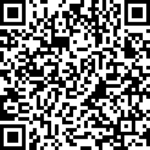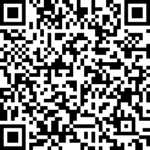- Key Takeaways
- Why Self-Reflection Matters
- Effective Self-Reflection Techniques
- Tailor Your Reflection Practice
- Overcome Common Reflection Barriers
- Integrate Reflection Into Daily Life
- Measure Your Inner Growth
- Conclusion
- Frequently Asked Questions
- What is self-reflection and why is it important?
- What are some effective self-reflection techniques?
- How can I make self-reflection a daily habit?
- What should I do if I struggle to reflect on my own?
- How do I know if my self-reflection practice is working?
- Can self-reflection help with stress and anxiety?
- How do I overcome barriers to self-reflection?
Key Takeaways
- Regular self-reflection is a key practice for cultivating self-awareness, refining your decision-making, and building emotional intelligence all of which fuel personal and professional growth.
- There are various effective self-reflection techniques journaling, audio recording, mindfulness, creative expression and trying out different methods can help you discover what best fits your personal style.
- By scheduling these reflection sessions and blending them into existing daily habits, you’re far more likely to sustain this beneficial habit even when life gets hectic.
- Utilizing tools like smartphone apps for journaling or reminders, or even wearable devices that prompt reflection, can help integrate these practices into your daily routine.
- Common obstacles like distraction or feeling unmotivated are best addressed with proactive countermeasures designating a special reflection room and reciting the science-backed benefits, for example.
- Checking your progress by revisiting old entries and requesting feedback from others assists in mapping inner development and bolsters the practice of ongoing self-reflection.
Powerful self-reflection practices are specific rituals or routines that assist individuals to retrospect, contemplate and extract insights from their experience. Techniques such as journaling, external input, daily check-ins, and structured prompts all serve to elicit truthful reflection. Some employ straightforward lists, others discuss with mentors. Both provide a means to identify trends and effect real transformation. In the following section, discover what tools align with your style and requirements.
Why Self-Reflection Matters

Self-reflection is at the heart of growth. It allows individuals to examine their thoughts, actions, and emotions in sincere manners. For most, this habit is hard to construct, but it delivers genuine transformation. Studies highlight this discrepancy although the majority believe they are self-aware, only a minority actually are. This chasm prevents growth, which is why self-reflection is essential for anyone looking to improve their work, their relationships, or their day-to-day life.
Self-awareness is the foundation of all growth. When we take the time to observe our own feelings and reactions, we can identify patterns that assist or undermine us. For example, a tech analyst who pauses to self-reflect after each project might identify his own errors, learn from them and prevent them from recurring. This sort of candid glance, reflective or otherwise, helps you see where you are, what you believe in, and what must shift. Answering basic queries, such as ‘What went well today?’ or ‘What did I resist?’, can create a vivid self-portrait. Eventually, this becomes consistent expansion, as individuals begin to make decisions intentionally.
Learn why self-reflection matters for decision-making. Great decisions come from understanding what’s truly important to you. Self-reflection allows room to consider possibilities, to review previous decisions, to observe what succeeded or flopped. For instance, a manager could reflect on a time in which they dealt with a team conflict. In doing so, they can check to see if their words aligned with their values, or if fear or habit interfered. This habit slows you down before you act, turning decisions into less of an instinctual response and more of a considered step toward a long-term objective. It prevents decisions from being hurried or stress-based.
Pinpoint the role of self-reflection in boosting emotional intelligence. Self-reflection empowers individuals to be in charge of their emotions. This is the mark of an adult. It can be difficult, particularly if you are the type that prefers to make quick decisions or chew things over with friends. The deeper work of looking inwards helps people understand why they respond a certain way. They can then decide how to express emotions, rather than allowing them to erupt in regrettable ways. This creates trust, softens feedback and enhances collaboration.
Self-reflection allows you to pause and take a breath. It helps unravel knotted thoughts and identify what’s triggering anxiety. When they check-in with themselves, they can discern what requires their attention and what doesn’t. It helps prevent stress from accumulating and allows individuals to confront life’s challenges without losing sight of their values. Over time this results in a gentler relationship to yourself and more lucid thinking.
Effective Self-Reflection Techniques
Self-reflection is a craft that requires both discipline and freedom. What works for one person may not work for others, hence trying out various options is essential. Though it’s not always easy or comfortable to look within, the habit of doing so regularly yields greater self-awareness, clarity, and personal growth. Reflection can additionally assist in stress control and mental well-being. Studies demonstrate that it minimizes burnout and maximizes job satisfaction. Set regular sessions, leverage technology to stay on track and experiment until you find what works. Some effective techniques include:
- Journaling with focused prompts
- Audio or video diaries
- Mindfulness and meditation practices
- SWOT analysis or mind mapping
- Group discussions and peer feedback
- Nature walks for mental clarity
- Using apps for reminders and structured questions

1. The Written Word
Journaling is the quintessential self-reflection technique of choice around the world. It forces you to translate confusing feelings and illogical thoughts into a rational language, which makes them easier to dissect. Future-self letters allow you to become detailed with your goal-setting as well as vividly seeing yourself as the person you want to be. Taken from quality management, the Five Whys digs deeper by asking “Why?” to each response, helping you to find root causes of your thoughts or behavior. A personal SWOT analysis identifies your strengths, weaknesses, opportunities and threats, prompting you to be truly candid about yourself.
2. The Spoken Word
Talking your thoughts through with a mentor, peer, or support group can provide clarity and introduce new perspectives. Feedback enables you to identify blind spots and to question your assumptions. Short audio journals on your phone allow you to capture raw, spontaneous thoughts. There is a lot of value in sharing in groups, in-person or online, as it can provide support and a degree of accountability. Tracking your reflections and returning to them later reveals insights and trends you’d otherwise overlook in the moment.
3. The Mindful Pause
Mindfulness and meditation are great for non-judgmentally observing thoughts. Doing these daily, even for a few minutes, trains you to catch mind noise and emotional reactions. Breathing exercises quiet the mind and ground you prior to contemplation. These quick pauses throughout your day to touch base with how you’re feeling keep stress from snowballing. Mindful observation such as in Naikan therapy can enrich relationships and nurture well-being.
4. The Creative Outlet
Journaling, art, music or creative writing can expose subconscious thoughts and emotions. Visual autoethnography photo diaries, for example allows you to narrate your experience in more than just textual form. Mind maps structure confusing emotion in an intuitive, graphical manner. Shadow work, a psychological practice, helps you confront and comprehend aspects of yourself you might shy away from.
5. The Natural Connection
Being out of doors invites serenity and meditation. Nature inspires introspection and imagination. Walks in the park liberate your mind from the tyranny of screens and daily clamor. Vague reflections on your time in the woods can often provide fresh insight into personal and work-related problems.
Tailor Your Reflection Practice
Reflection is not a monolithic practice. It’s about learning through and from experience, discovering fresh insights about yourself and your work, as Finlay describes. This makes you view your efforts in new ways and forces you to expand. By tailoring your reflection practice to your needs and objectives, you extract more genuine worth from every session. Different folks require different arrangements, so it’s fine to customize and combine whatever suits you.

Some enjoy journaling, others find comfort in conversation, and some incorporate visuals. Here are some ways to shape your approach:
- Maintain a journal into which you write about your day and emotions.
- Try voice notes if writing feels slow or stiff.
- Create mind maps to identify trends or connections in your thinking.
- Reflect with a peer or group for shared insights.
- Use photos or sketches to capture feelings or moments.
Goals give your reflection direction. With the SMART (Specific, Measurable, Achievable, Relevant, Time-bound) method you peel big hopes into steps you can verify. For instance, if you want to manage stress more effectively, commit to something like “I will write down three stressful situations per week and record how I responded.” This keeps you motivated and allows you to witness momentum.
Reflection works best when you examine both ‘hot’ and ‘cold’ moments. Hot reflection occurs immediately after an experience, while emotions are still fresh. Cold reflection is for later, once you’ve had time to cool off, and think with more distance. Both kinds assist you in viewing the big picture, and collectively they contribute to more profound learning. For example, following a hard meeting, note your initial reactions. A day later, read it and see what pops or feels less urgent. This two-pronged system allows you to identify patterns and visualize your progress.
Structured tools can focus your thinking. The ‘Situation-Puzzle-Response-Evaluation’ (SPRE) method leads you to explain what happened, what puzzled you, how you responded, and what you took away. SWOT (Strengths, Weaknesses, Opportunities, Threats) gives you a crystal clear view of where you stand, and what you need. Mindfulness and meditative reflection help you step back, breathe, and see life’s big questions. Each provides a basic structure to guide you into greater depths.
Reflection prompts, such as “What bothered me today?” or “What am I proud of this week?” assist you in identifying patterns and areas for development. Switch up your implements or prompts if you begin to feel bored or blocked. Switching up your routine keeps it fresh and allows you to continue learning.
Overcome Common Reflection Barriers
Self-reflection aids development, yet most of us encounter minor or substantial impediments that decelerate this process. Aware of these common reflection blocks, knowing what stands in the way, and how to move past them, can help make self-reflection more useful and less of a grind.
A nice start is to identify what typically interferes. These blocks can manifest in numerous ways. Time is a big one too many people say that they simply don’t have the time. Bad time use compounds the issue. When the day is jammed or the brain is fried, carving out room to pause and ponder can seem difficult. Perfectionism is another stumbling block. Others feel like if they don’t have profound thoughts or a clean, optimized process, it’s not even worth attempting. For others, introspection simply feels weird or uncomfortable, which is typical of extroverts. Sometimes there is no support from friends, family or work. That can make you feel isolated or unappreciated. Rerunning what you do each day can become stale quickly, eroding your ability to remain inquisitive or receptive to new ideas.
A straightforward checklist can catch these barriers. Ask: Do I put off making time for myself? Do I feel like I have to do it right or not at all? Does sitting in quiet and observing my thoughts feel weird or awkward? Do I get caught up on minutia instead of grander notions? Do I have supporters for my reflection or am I isolated? If you answer yes to any, that’s a flag to work on these bits!
To get beyond these blocks, begin by choosing a fixed time to reflect. Even ten minutes can suffice, if you do it habitually. Establish a designated, noise- and screen-free place it might be a cozy corner of your apartment, a bench in a local park, or a table at a café with headphones. Experiment with reflection methods some people enjoy writing, others prefer discussing or utilizing art or mind maps. If one way seems wonky, then don’t quit. Choose a different path or time of day. When you hit a block, or aren’t feeling the depth, pose a harder question. For example, instead of asking, “How did my day go?” ask, “What did I learn about myself today?” or “Why did I react that way?” This aids in shoving aside scratch thoughts and breaking new ground.
It further assists to recall why this work is important. Self-reflection can help you make better choices, experience less stress, and grow more. If it gets hard or you feel foolish, remember that’s okay. Cut yourself a little grace and a little time. No one nails it, and you don’t aim to score but to study.
Integrate Reflection Into Daily Life
Adding reflection to daily life can help us get a bit more control over our actions and choices. It induces a mindfulness that spills over into work, study, and personal life. They discover, as do most others who make the effort, that this consistent habit induces more clarity and insight into their own thinking and actions. Basic prompts at the close of a day what did you accomplish, what was hard, what did you learn? can be all it takes to trigger candid reflection. These pauses, done with care, frequently reveal patterns you otherwise might […] Over time, this repeated daily reflection can generate a deeper sense of self and a more honest image of strengths and gaps.
Make Reflection a Part of Your Morning or Evening Routine
- Choose a time, either morning or night, to take a step back and reflect on your day.
- Ask yourself what you accomplished, what was hard and what you might change next time.
- Maintain a brief journal or note app to capture your key ideas.
- Allow yourself no more than five to ten minutes a day, so it’s a task that’s easy to maintain.
- Over weeks or months, review your notes to identify patterns or areas in which you have developed or require additional attention.
A daily routine cultivates the habit, which makes you less likely to blow it off. Daily reflection helps these hyperreflexives cultivate a mindfulness around their decisions, leading them to become more cognizant of when their options impact mood and results. Taking time to review helps identify changes required in daily habits, work, or relationships. For the uninitiated in introspection, beginning with a fixed schedule renders the habit less overwhelming and more sustainable.
Use Prompts to Encourage Daily Reflection on Experiences
Simple prompts like these help make reflection more focused. Prompts can be simple or customized to your objectives. For example, ask: “What made me feel proud today?” or “What could I have handled better?” For those in a tech or business field, prompts could be, “What did I learn from today’s data analysis?” or “Which process slowed me down, and how can I fix it?” Prompts are good because they steer your mind, prevent you from sidestepping difficult subjects, and assist in monitoring progress over time. They further simplify reflection at the end of a rough day when you’re not sure where to begin.
Set Reminders to Ensure You Prioritize Reflection Amidst a Busy Schedule
Reflection can fall by the wayside when life gets hectic. A phone reminder or calendar alert can assist. Select a time that works for you after dinner, before your commute and make it a habit. Reminders act as prompts to pause toward reflect particularly on frenetic or stressful days. This small step keeps the habit strong, even when your schedule shifts. Routine reminders keep reflection a non-negotiable component of your growth.
Measure Your Inner Growth
Self-reflection is the process of examining your inner thoughts, emotions and behaviors in order to measure your personal growth and chart your future growth. It aids you to become better acquainted with yourself and identify aspects that require improvement. A journal, mindfulness, and especially check-ins are great ways to witness this transformation. Basic, sincere inquiries such as “Did my actions align with my values today?” or “What would I do differently tomorrow?” can reveal whether you’re progressing or stagnant. These steps work for everyone, regardless of your occupation or location.
A chronology of your journal entries allows you to observe the changes in your mind and your temperament. If you write weekly or monthly, you can create a table comparing what you wrote then and now. Below is a sample timeline to show how you might track your journey:
Date | Main Thought/Feeling | Change Noted? |
|---|---|---|
2023-03-01 | Felt stressed at work | No clear plan |
2023-06-01 | Managed stress with walks | Better coping |
2023-09-01 | Confident in new tasks | More self-trust |
2023-12-01 | Helped others at work | More empathy |
2024-03-01 | Set new learning goals | Growth mindset |
Flipping back through old entries, you may see you were once lost or angry, but now face things with peace or optimism. It measures the growth you might overlook if you fail to glance back. If you look back following a hard day and compare how you handled stress six months ago, it can confirm you’ve figured out new approaches to problem solving. Mindfulness, like deep breathing or mini-meditations, can aid in observing these transitions in the moment, as well.
Peer feedback is a powerful way to measure your growth. Occasionally, your perception of yourself isn’t the same as the way others perceive you. Request, therefore, from trusted friends or colleagues honest observations of your transformations. Did they realize you hear more or be less angry. This external perspective can reveal blind spots and assist you in continuing to grow.
Milestones–big and little–count. Perhaps you took the floor at a meeting for the first time, or negotiated a difficult conversation delicately. When you check off these steps, you measure your momentum and feel proud. This constructs the impulse to persist. Self-compassion, or the ability to be kind to yourself even when you screw up, is crucial. Growth is not linear, and setbacks are par for the course. Awareness of this keeps you grounded and checking in.
Conclusion
To develop rock-hard habit, attempt tiny strikes every day. Take brief notes after work, or pose yourself a single succinct question before bed. Stick to easy-to-use instruments such as a notebook or your phone. Over time, these moves begin to reveal real transformation. Record what changes, not only what remains constant. Trust your gut and let your thoughts run free, unedited. Discuss wins or rough patches with a friend or mentor. You don’t need fancy systems. You’ve got to show up for you. Each attempt provides you additional information. Begin immediately, observe what you discover, and touch base regularly. If you’d like to trade tips or tales, get in touch and join the conversation.
Frequently Asked Questions
What is self-reflection and why is it important?
Reflection means thinking about your thoughts, feelings and actions. It aids you in knowing yourself, making decisions, and developing as a person and a professional.
What are some effective self-reflection techniques?
Good methods are journaling, guided questions, meditation and talking through experiences with a confidant. Pick whatever works for your lifestyle and comfort.
How can I make self-reflection a daily habit?
Make time once a day, like after work or before bed. Employ prompts or journals to direct your musings. Consistency helps fortify this habit over time.
What should I do if I struggle to reflect on my own?
Experiment with structured tools such as reflection apps, or peer support through a coach or counselor. Group discussions or peer support can provide you with new perspectives.
How do I know if my self-reflection practice is working?
Pay attention to shifts in your perspective, choices and emotions. If you feel more mindful and make smarter decisions, your exercise is successful.
Can self-reflection help with stress and anxiety?
Yes, self-reflection can reduce stress and anxiety by helping you understand your triggers and find healthier ways to cope with challenges.
How do I overcome barriers to self-reflection?
Begin modestly and exercise patience. Eliminate distractions, establish a nice setting, and remember the rewards. If necessary, consult mentors or employ formal reflection questions.



